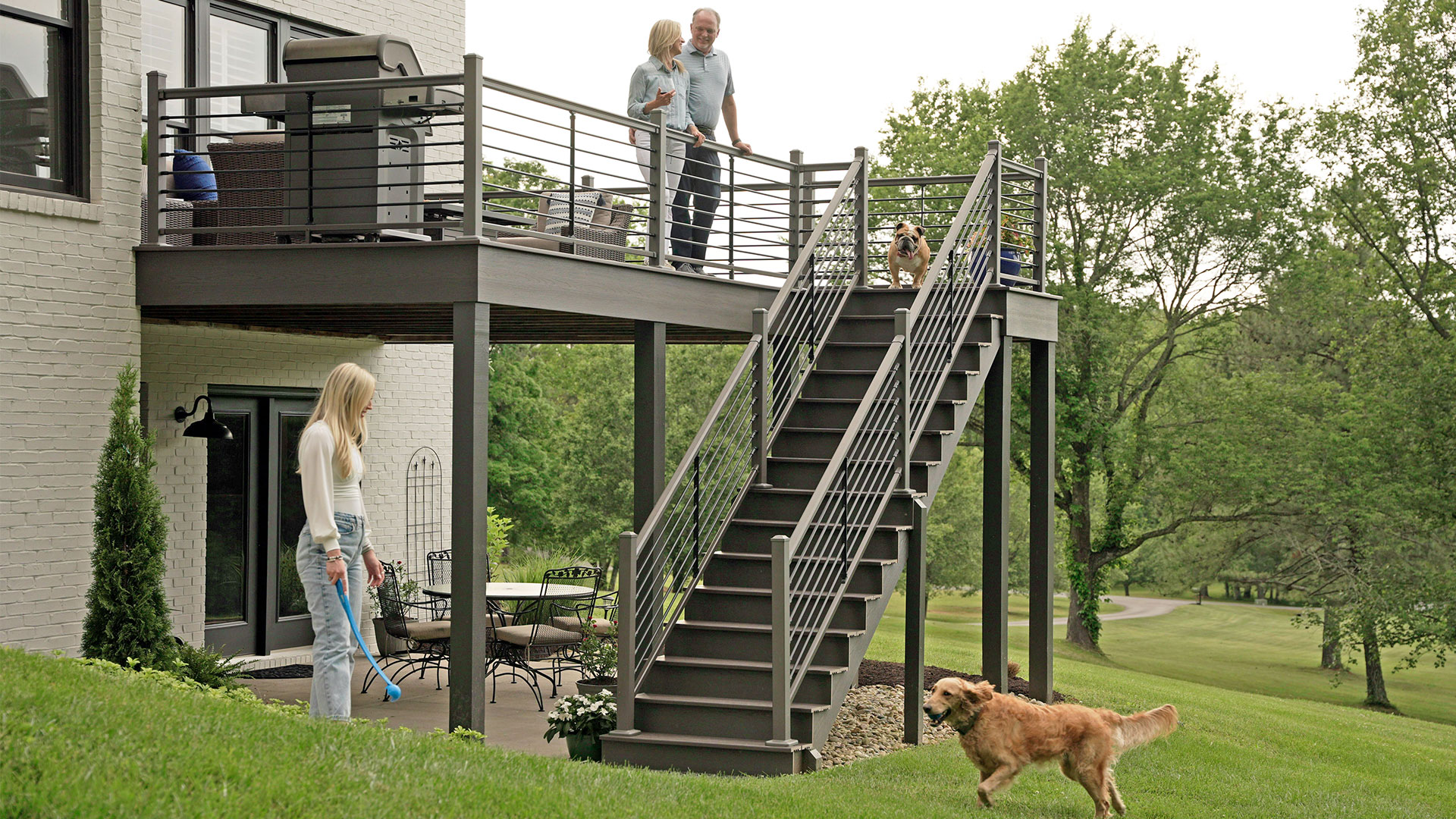9 Questions to Help Choose the Best Deck Railing
Few outdoor living spaces are complete without the perfect deck railing system. With there being a range of materials and styles available ensures there’s a look for every need. But with so many options, how do you choose the best deck railing for your project?
The easiest way to narrow down deck railing system selections is to answer a simple series of questions that cover the railing’s required functionality, a buyer’s desired tastes, local codes, and other factors. Once that process is complete, coming up with deck railing ideas for an outdoor living space is much more approachable.
What is the Ideal Deck Railing System for Your Outdoor Living Project?
The first step is to consider which railing will best fit the project’s parameters. Focus on these questions:
- What is the required height in your area?
On average, the deck railing code will call for 36” or 42”.
- Does the deck have a lot of angles?
If there are level runs with angles, certain styles of deck railing will be more user friendly for everyday use and installation. Our A210 and A310 aluminum railings, for example, are the easiest to install on level angles. P310 cellular PVC railings and CP310 composite railings also can be used in this situation but may require a larger post sleeve at the angle. It’s also worth noting that the degree of angles is much more limited with vinyl deck railings.
- What are the surroundings like?
Is there a view or openness you want to maintain? If the answer to this question is yes, this will eliminate certain bulkier deck railing systems while moving lower-profile options to the top of the list. This can also inform the style of infill you want to use for your project.
- What is the project’s budget?
Deck railing materials and styles you chose for a project vary in price. From a materials standpoint, vinyl deck railing tends to be the most affordable, followed by steel, then composite and cellular PVC, and finally aluminum.
In terms of infill styles, square balusters tend to be more budget friendly and then round balusters. Glass panels and cable railing are on the more expensive end of the spectrum. But you also can mix and match to meet both the budget and style needs of your project. For example, you could choose white vinyl top rails with black aluminum balusters to create a deck railing system that has your own unique look. Or if cable rail is desired but out of the price range, horizontal balusters offer a similar look at a lower cost, while also requiring less maintenance than cable rail.
- Where is the project located?
Coastal areas need railing materials that can withstand the salty moist air, so vinyl, composite, and aluminum are a better option than steel.
What Aesthetics Are Preferred for Your Deck Railing System?
Of course, aesthetics also plays a critical role in deck railing choices. From a taste or trends perspective, consider these questions:
- Will the deck be used into the evening and therefore need lighting?
This is an important question because a two-piece top rail system will provide the most labor-friendly application of LED wiring. This two-piece design also makes it easier to access the lighting in the future for any ongoing maintenance or if it needs to be repaired.
- Will the deck be used for frequent entertaining?
If so, adding in a drink rail may be a great fit, as it provides a flat surface for placing drinks and small plates.
- What is the style of the home?
Though there are no official rules, certain types of deck railings pair better with particular home styles. For example, an ultra-modern house will likely look best with sleeker, slimmer top rails and balusters or a cable rail infill. A curvy, more ornate top rail or more robust baluster is a natural complement to a traditional house style.
- Is the desired look for the outdoor living space bold or blended?
In the early days of composite decking, projects often matched the deck with the railing, and composite railing was chosen in the same or similar color as the deck boards. Today, it’s trendy for deck railing systems to provide a pop of color and to choose a core material based on preference, rather than only picking a product based on the composite decking.
The deck railing choice you make comes down to personal preference, and the right answer sometimes becomes easier to see once you explore a few options. This is where a tool like our Deck Visualizer comes in handy—you can experiment with decking and railing colors and styles to see what appeals and looks best for your project.
Envision Outdoor Living Products Give You More Deck Railing Possibilities
If you’re still having trouble choosing a railing, it rarely fails to look for examples. In addition to using our Deck Visualizer tool, check out our Idea Gallery or request a quote to get your project moving.





















